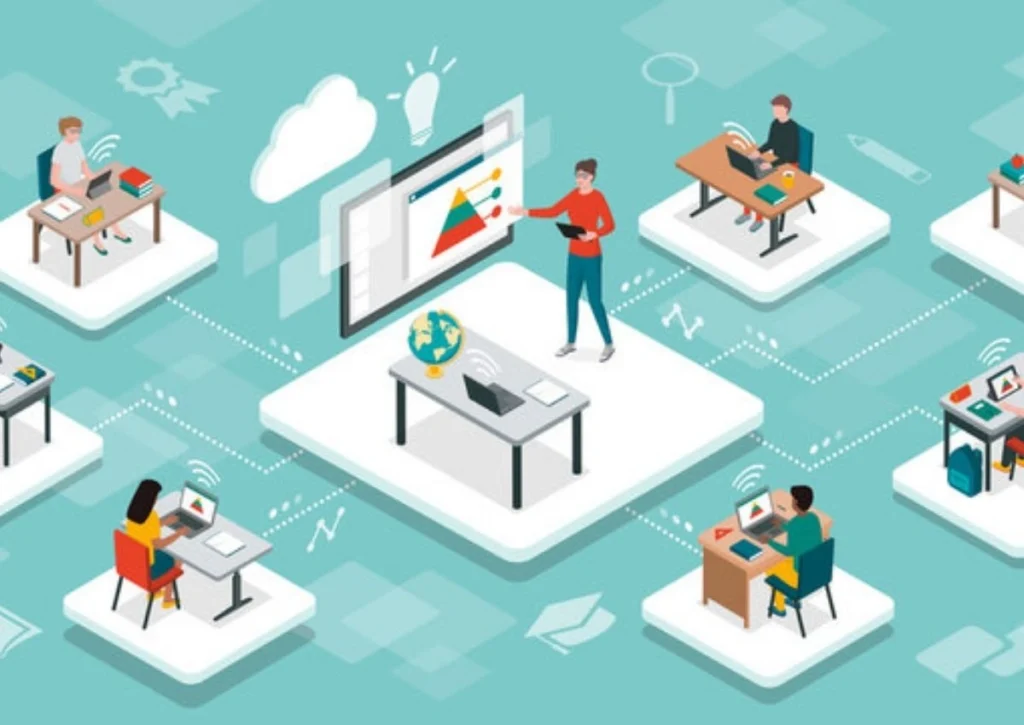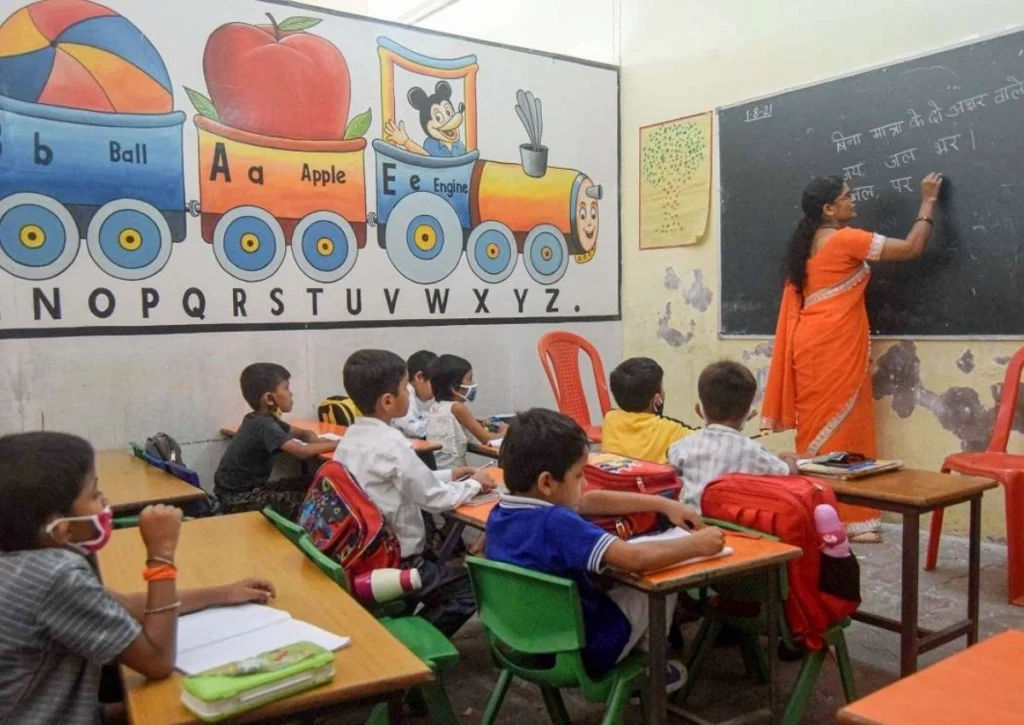The global education in 2025 is less of a contest between online and physical classrooms and more a space where they are increasingly converging. After the forced digital migration during the pandemic era, consensus has solidified: Hybrid Learning (blended learning) is the best mode of moving forward, combining the adaptability and access of technology with the critical social and interactive pieces of face-to-face instruction.
The transition to all-remote education demonstrated that technology could be used to ensure continuity, democratize access and provide a previously unheard of level of flexibility. It also shined a light on “how the importance of the in-person classroom is so incredibly meaningful for social skills, for immediate feedback, for cognitive and emotional engagement that digital-centric environments sometimes can’t match.”
Outsized magnet of online learning in classrooms

Online education has ceased to be the alternative; it is now a mainstream, legitimate route to academic and career advancement. 2025 statistics that now prove this trend even more with most of the students and professionals trashing away the conventional methods of learning towards Online learning platforms for major benefits from:
Flexibility and Convenience: An adaptable schedule is the top reason cited by 63% of students for pursuing their education online, as it enables them to manage work, family or other obligations along with their studies. This is especially important for working professionals and individuals looking to switch careers.
Affordability : Online degrees can be substantially more affordable by eliminating costs such as commuting, campus fees, and sometimes, the expense of physical real estate, widening access to education.
Personalization and accessibility: Several of the existing online platforms supported by AI-enabled tools and adaptive learning models provide personalized learning tracks. These systems track student progress and adjust in real-time to the needs of the student, they also offer instantaneous help on academic matters and support different learning styles. This can also eliminate distance as a barrier to high quality education.
Master Digital Skills: Learning to navigate Learning Management systems (LMS), collaborate on digital platforms and utilize virtual tools are aspects of online education that provide students with digital literacy for the workforce of today.
The Everlasting Appeal of the Traditional Classroom

Since the digital upsurge, the strength of physical classroom remains non-negotiable for all. In-person education promotes a novel set of advantages that contribute to overall development:
Face time and immediacy: face-to-face environments facilitate the synchronous, layered interactions that enable students to probe complex ideas and engage in hands-on experiences that are, at best, partially approximated in a virtual setting. Post-pandemic studies (DOBBINS, 2022) still indicate general agreement among students that they believe they learn better in a traditional environment, particularly in competency or practical areas such as medicine.
Social and Emotional Learning: We know that the physical classroom is an important place for students to learn softer skills, like teamwork, communication, and interacting with others. Unplanned exchanges and common experiences create a feeling of camaraderie and connectedness that helps alleviate the seclusion so often complained about in online-only environments.
Focus and Attention: The structured environment of a traditional classroom offers fewer distractions than an at-home environment for many, allowing for better focus. On the other hand, an often-cited complaint about distance learning is finding it difficult to stare at a computer screen for too long.
The Best of Both Worlds: The Emergence of the ‘Blended’ Model
The consensus for education in 2025 is that Hybrid (or Blended) Learning model—based on a calculated combination of face-to-face interactions with traditional teaching methods and flexible online delivery—is the most sustainable and effective way forward. This model is increasingly becoming more mainstream as more than 60% of U.S. higher education institutions and the vast majority of K-12 schools are expected to adopt a blended or hybrid model.
Hybrid Education Work?
Blended isn’t just a mix, it’s a deliberate design that takes full advantage of both Formats:
| Feature | In-Person Component (Traditional) | Online Component (Digital/Remote) |
| Engagement & Interaction | Focus on collaborative projects, real-time debates, hands-on labs, and immediate Q&A. | Self-paced video lectures, interactive simulations, peer review platforms, and gamified content. |
| Content Delivery | Guided instruction, complex concept discussion, and mentorship. | Access to 24/7 resources, downloadable notes, on-demand lecture replays, and external enrichment materials. |
| Assessment & Feedback | Traditional exams, presentations, and direct instructor critique. | Adaptive assessments, AI-powered instant feedback, and data-driven monitoring of individual progress. |
| Community | Fostering personal relationships, networking events, and campus life. | Global peer groups, virtual discussions, and flexible communication with faculty. |
Challenges in the Digital Age
Although the way forward has been set out, there are still substantial barriers to overcome, relating most of all to inclusiveness and standards.
Digital Divides: Access to reliable high-speed internet and requisite devices continues to be a significant barrier, especially in rural areas. To make hybrid models work, governments and institutions will have to keep bridging this digital divide so as to guarantee equal participation.
Preparing Teachers: The move to blended teaching requires intense professional development for teachers—not only in how to use digital tools, but also how to develop courses specifically for the hybrid model, which is a very different skill set than teaching in the traditional classroom.
Self-Regulation: Students need to exercise more discipline and manage their time better in an online course. People without these skills tend to have a hard time, and so they need focused academic assistance and resources around managing themselves.
The Future is Adaptive and Immersive
Looking to the future, the blended learning experience is going to get even more engaging, thanks to ed tech. The convergence of XR, encompassing VR and AR, is set to deliver immersive educational experiences to simulate real hands-on practice without any spatial restrictions. In addition, the growing adoption of AI will enable hyper-personalized learning and allow teachers to dedicate more time to mentoring, providing emotional support and the multifaceted, face-to-face interactions that contribute to a positive learning environment.
In 2025 the debate is moot. The question just isn’t “which best?” but rather “how best to blend them?” The formula for success is one that is adaptable, innovative, and at its core human centric that provides a path to learning for every learner in this new era of education.
Also check:- The Future of AI Tutors and Personalized Learning




